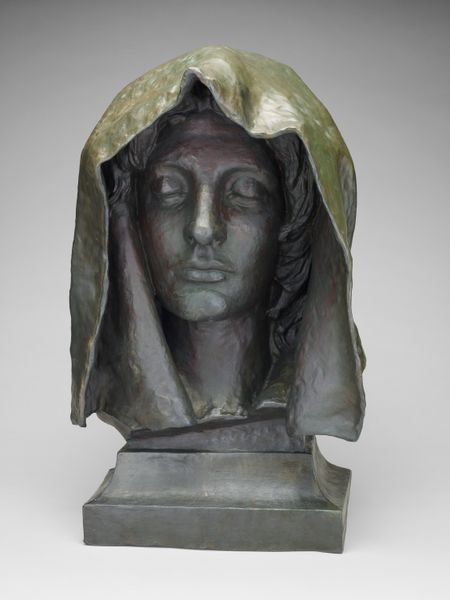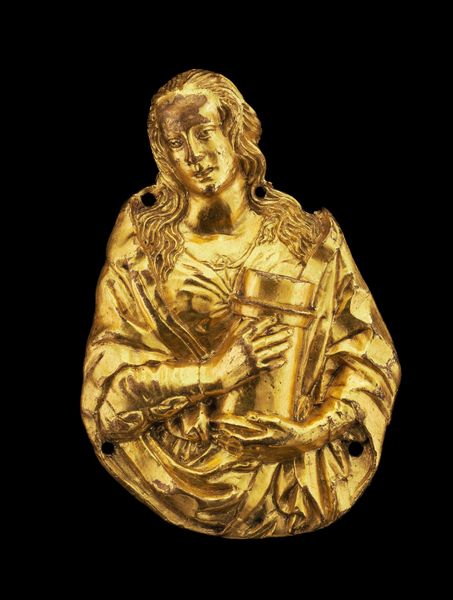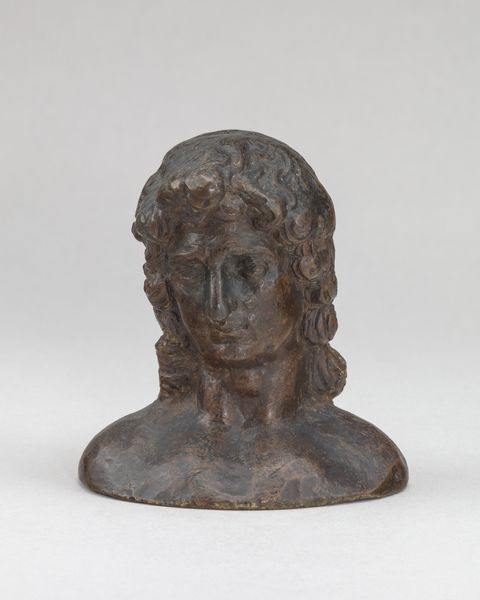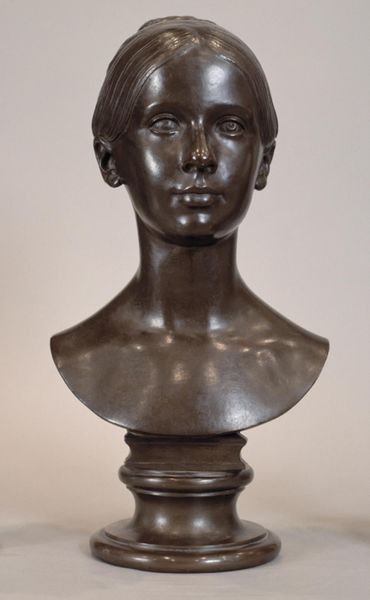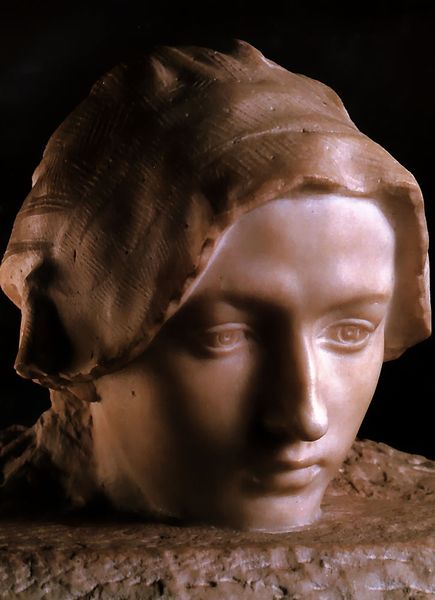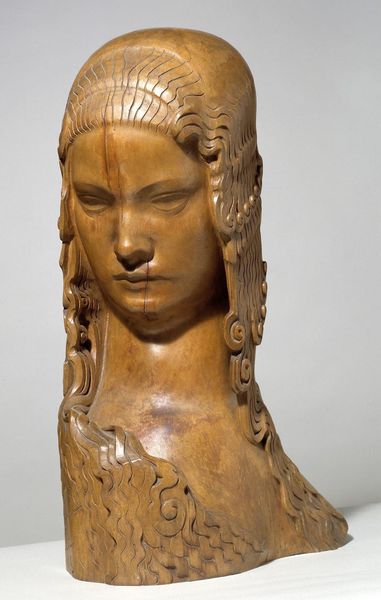
sculpture, ivory
#
portrait
#
medieval
#
sculpture
#
sculpture
#
ivory
Dimensions: 2 9/16 × 2 × 1 7/16 in. (6.51 × 5.08 × 3.65 cm)
Copyright: Public Domain
Curator: Looking at this Madonna, dating perhaps from the 17th or 18th century, I'm struck by her serenity. Isn't it wonderful how something carved from ivory, so dense, can exude such peacefulness? Editor: She gives me the chills! It's something about the stillness, the way the eyes don't seem to look *at* you, but *through* you. A little unnerving, honestly, but undeniably striking in its craft. I find the smooth finish juxtaposed against the rough carving around the head intriguing. Curator: The formal constraints were certainly at play here. But the sculptor’s choice to present the Madonna as a bust—isolated, yet complete—encourages a powerful level of scrutiny, focusing our attention on her essence. Editor: Essence indeed! But what is she *feeling*? There is such formal simplicity. It invites projection but her lack of affect closes you off in a peculiar way. There are also subtle visual paradoxes: The flowing lines of her hair are interrupted with its geometric finish. What does this structural interruption communicate? Curator: Perhaps a contained sorrow? Or maybe a profound sense of duty? Think of the material, too; ivory has always carried connotations of purity and even sacrifice. In this context, the work could represent her acceptance of her fate, and that of her son. There's such beauty in the craftsmanship. Look at the folds of her hair, so delicately rendered. The face is a masterpiece of subtlety. Editor: You're right. It is so delicately rendered; the formal constraints make the rendering particularly engaging! It seems this artwork captures an inner narrative – and an enigma to be unravelled! Curator: It is hard to walk away without an emotional connection. I will leave today pondering our silent subject.
Comments
minneapolisinstituteofart almost 2 years ago
⋮
The province of Goa in western India was under Portuguese control from 1512–1961, forming a nexus in trading routes that circumnavigated the earth. Goan craftsman were renowned for their supple modeling of ivory (likely exported from Mozambique) into Christian icons, which feed the appetite for luxury products in Europe, as well as furthered evangelical missions throughout Asia and the Americas. Within the genre of Indo-Portuguese ivories, popular subjects include ‘Christ as the Good Shepard’ (the image of Christ as child would have related to similar bronze statuettes of the God Krishna) and the ‘Virgin of the Immaculate Conception,’ which shows Mary atop a crescent moon, both of which remain ever-present icons in South Asia’s diverse religious landscape.
Join the conversation
Join millions of artists and users on Artera today and experience the ultimate creative platform.

